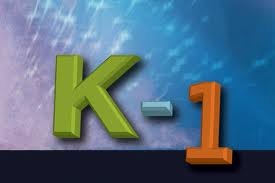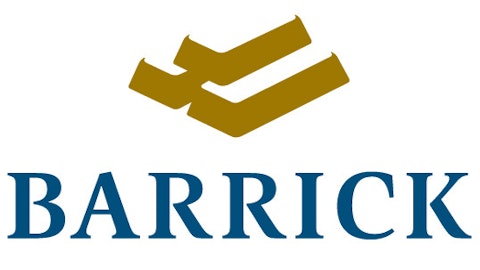
Unfortunately, however, the tax treatment of exchange-traded products cannot be summed up simply as being more efficient than mutual funds. There are various complexities across the different product structures that impact the effective tax liabilities that will be incurred on gains. And there are also some nuances that impact how taxes on various ETP positions must be reported that are of major importance to some financial advisors. Gains and losses on the majority of exchange-traded products are reported on Form 1099, just like individual stocks. A select few among a universe of 1,400+ funds, however, issue a K-1 to investors that outlines their individual share in the profits and losses of what is technically a limited partnership.
As a general rule, gains and losses for a typical ETP are reported on Form 1099, but there are a number of ETPs that are structured as partnerships and as such, will issue a K-1. Exchange traded funds that utilize futures contracts, a trait that most often describes commodity ETPs, will send out K-1s [see also The Ten Commandments of Commodity Investing].
What is a K-1?
There is a fair amount of confusion over what exactly a K-1 is and what receiving one of these statements means. A K-1 is a tax document used to report share of profits and losses from interests in limited partnerships. These documents become relevant because many exchange-traded products are technically structured as partnerships, meaning that investors are actually limited partners. Partnerships are typically not required to pay taxes directly, instead they pass those obligations to individual partners. They do that by sending a K-1 to partners each year detailing their interest in the operations of the partnership [see also Analyzing Five High Yielding Oil & Gas Pipeline Stocks].
Many investors wish to avoid K-1s primarily because of the inconvenience caused. Schedule K-1 tends to be one of the last documents provided to taxpayers, potentially delaying the timing of their filings. For advisors with hundreds of clients, the administrative burden associated with K-1s can be less-than-optimal. But it should also be noted that receipt of a K-1 generally means a taxable event–even if the related position has not been liquidated. In other words, securities that issue a K-1 may require investors to report and pay taxes on gains annually, even if the security has not been sold.
For some, K-1s are not a significant issue–simply a minor inconvenience. Others try to avoid these schedules at all costs, preferring to use exchange-traded products that can be reported on a Form 1099. Commodity ETPs make up the majority of the K-1 issuing space, as many of these products are structured as partnerships that utilize futures contracts to offer exposure. It should be noted that physically-backed ETPs such as SPDR Gold Trust (NYSEARCA:GLD) do not issue K-1s, nor do commodity ETNs. The following table is a list of all commodity ETPs that issue a K-1 [see also 12 High-Yielding Commodities For 2012].
| Ticker | ETF | Expense Ratio |
| AGQ | Ultra Silver | 0.95% |
| BNO | United States Brent Oil Fund | 0.75% |
| BNPC | STREAM S&P Dynamic Roll Global Commodities Fund | 0.65% |
| BOIL | Ultra DJ-UBS Natural Gas | 0.95% |
| CANE | Sugar Fund | 1.00% |
| CMD | UltraShort DJ-UBS Commodity | 0.95% |
| CORN | Corn Fund | 1.42% |
| CPER | United States Copper Index Fund | 0.95% |
| CRUD | WTI Crude Oil Fund | 1.54% |
| DBA | DB Agriculture Fund | 0.75% |
| DBB | DB Base Metals Fund | 0.75% |
| DBC | DB Commodity Index Tracking Fund | 0.75% |
| DBE | DB Energy Fund | 0.75% |
| DBO | DB Oil Fund | 0.75% |
| DBP | DB Precious Metals Fund | 0.75% |
| DBS | DB Silver Fund | 0.50% |
| DGL | DB Gold Fund | 0.50% |
| DNO | United States Short Oil Fund | 0.60% |
| FOL | 2x Oil Bull/S&P 500 Bear | 0.75% |
| FSG | 2x Gold Bull/S&P 500 Bear | 0.75% |
| GCC | Continuous Commodity Index Fund | 0.85% |
| GLL | UltraShort Gold | 0.95% |
| GSG | GSCI Commodity-Indexed Trust Fund | 0.75% |
| KOLD | UltraShort DJ-UBS Natural Gas | 0.95% |
| NAGS | Natural Gas Fund | 1.50% |
| SCO | UltraShort DJ-UBS Crude Oil | 0.95% |
| SOYB | Soybean Fund | 1.00% |
| TAGS | Agricultural Fund | 0.32% |
| UCD | Ultra DJ-UBS Commodity | 0.95% |
| UCO | Ultra DJ-UBS Crude Oil | 0.95% |
| UGA | United States Gasoline Fund LP | 0.60% |
| UGL | Ultra Gold | 0.95% |
| UHN | United States Heating Oil Fund LP | 0.60% |
| UNG | United States Natural Gas Fund LP | 0.60% |
| UNL | United States 12 Month Natural Gas Fund | 0.75% |
| USAG | United States Agriculture Index Fund | 0.80% |
| USCI | United States Commodity Index Fund | 0.95% |
| USL | United States 12 Month Oil | 0.60% |
| USMI | United States Metals Index Fund | 0.70% |
| USO | United States Oil Fund | 0.45% |
| WEAT | Wheat Fund | 1.00% |
| ZSL | UltraShort Silver | 0.95% |
This article was originally written by Jared Cummans, and posted on CommodityHQ.




